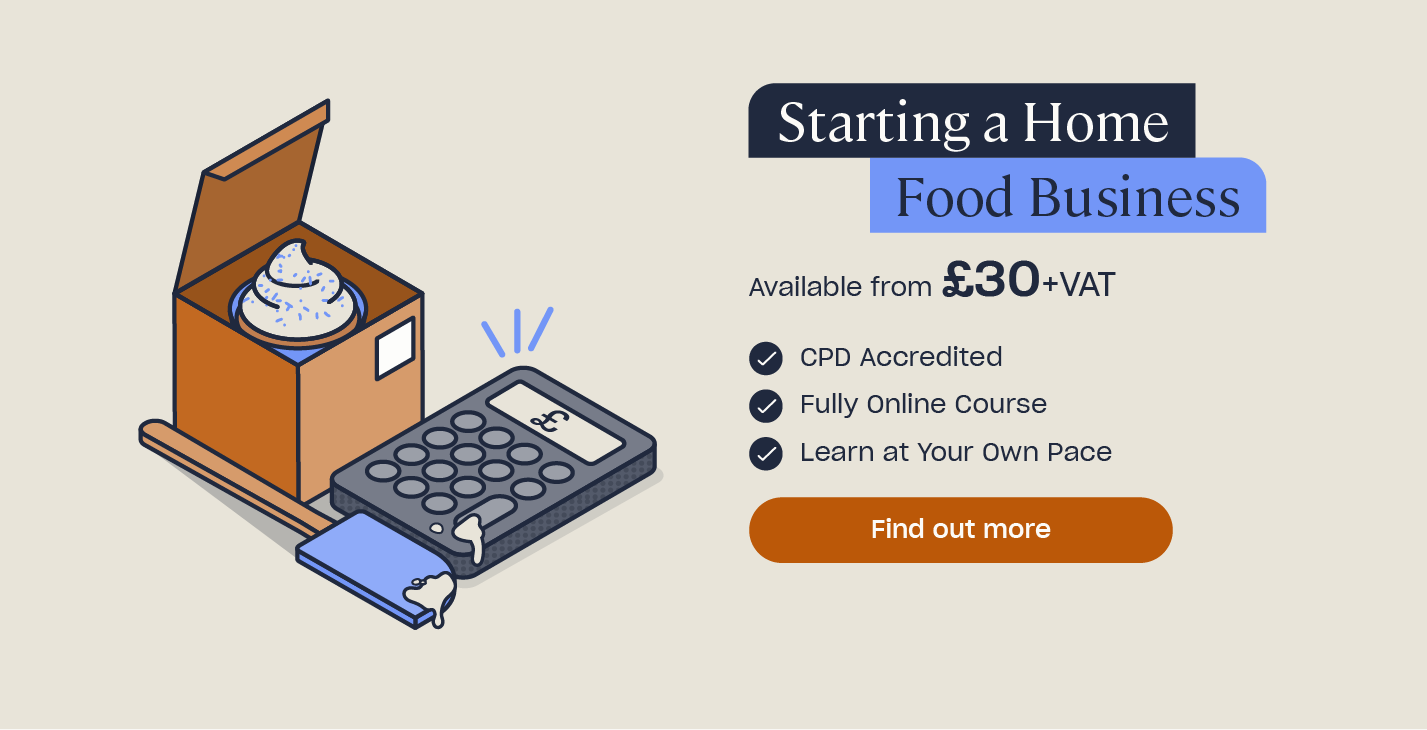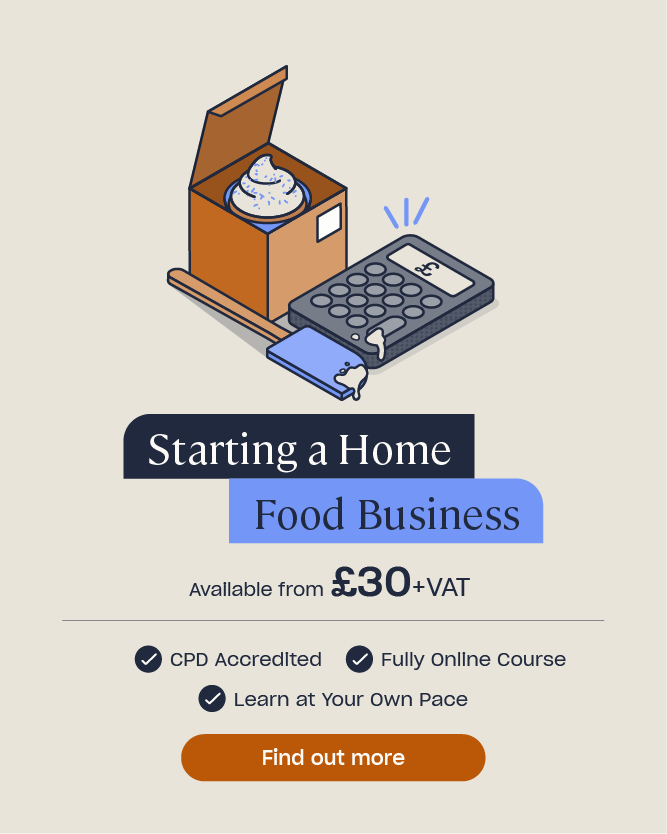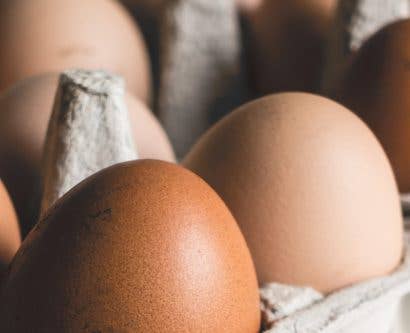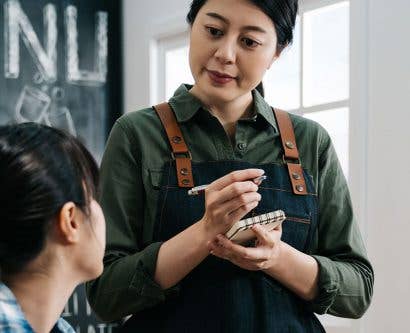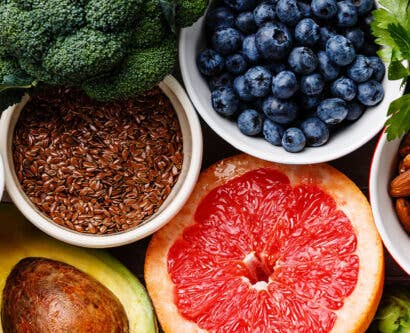What are the Different Types of Sustainable Food Packaging?
Packaging is an essential part of food manufacturing and should aim to represent the environmental values of a brand to a customer. It is important to understand the challenges involved in creating sustainable packaging instead of prioritising materials which have a perception or sensory experience of being sustainable.
This article will outline what is meant by sustainable packaging, and discuss the positive and negative environmental impacts of each type of food packaging material. We will also explain how to avoid ‘greenwashing’ and how to reach a conclusion on which packaging materials you should use in your business.
This article covers the following:
- What is Sustainable Packaging?
- Examples & Types of Sustainable Packaging for Food
- Which Food Packaging Materials Should I Use?
- How Do I Avoid Greenwashing?
Use the links above if you’d like to jump to a certain section of the article.
What is Sustainable Packaging?
The term ‘sustainable’ does not have a set definition or criteria and therefore can often be overused. Consumer perception of the word ‘sustainable’ is usually that the continuous production of the product does not use up resources that cannot be replaced faster than being used. It also implies that the environmental impact of producing the product has been minimised.
Equally, ‘eco friendly’ is also used interchangeably with the word sustainable to mean that a product or business does not harm the environment and/or conserves resources.
Greenwashing is a term used to describe businesses that provide misleading or unsubstantiated claims in regards to their environmental impact. Consumers are more and more aware of false environmental impressions through claims on packaging.
Carbon neutral is becoming a popular goal for businesses. This is because sustainable practices are considered to be standard, and no longer classed as forward thinking. It is a claim to describe the net-zero carbon emissions which is achieved by balancing the emissions with its removal from the environment. This can be achieved several ways. However, some consumers deem planting trees without attempting to reduce the emissions being created as a form of greenwashing. Companies wishing to go carbon neutral or carbon negative should place the importance on reducing carbon emissions as much as trying to offset it.

With a finite amount of resources, unsustainable practices will inevitably result in running out of raw materials. A ‘circular economy’ describes the reuse of packaging materials without any waste which does not break down quickly, go to landfill, or end up in the ocean.
Reviewing your businesses sustainability practices could save money in the long run. For example, by reducing the size of packaging and any unnecessary overpackaging, savings can be made. Both from a reduction in packaging costs and a reduction in shipping costs – from fuel and being able to transport more products in one shipment at a time.
Back to TopWhat’s the Difference Between Biodegradable, Compostable and Recyclable?
Biodegradable food packaging means that the food packaging will break down quicker. Often, biodegradable plastics break down into microplastics (smaller fragments of plastic). Biodegradable materials are a popular ‘greener’ alternative to plastic; however, microplastics are thought to be highly damaging if they end up in the ocean.
Compostable food packaging means the packaging breaks down into its original components and can be placed in a food waste bin. Once composted, the material should not be harmful to the environment. Another benefit of compostable packaging is that food debris on the packaging does not have to be washed off. However, compostable packaging will not have the same barrier properties as plastic if, for example, a vacuum seal is required for freshness. Also, some compostable materials can only be composted through industrial processes which are not widely available.

Recyclable packaging can be processed and reused again. Paper, glass, metals and some types of plastic are able to be recycled. Packaging materials often contain a symbol to inform the consumer if the material is able to be recycled such as the ‘Widely Recycled’ logo or a Plastic Resin ID.
Back to TopExamples & Types of Sustainable Packaging for Food
Examples of sustainable packaging materials are:
- Dissolvable or biodegradable packing peanuts.
- A paper bubble wrap alternative which can be recycled after use.
- Biodegradable air pillows made from recycled plastic.
With the consumer demand for eco-friendly packaging and reduced plastic packaging increasing, businesses have looked to use innovative compostable packaging materials from well known food products.
Corn starch can be used to make plates, trays and portion sized boxes which can be a good alternative to polystyrene takeaway boxes.
Popcorn is another popular sustainable packaging option to replace non-biodegradable plastic packing peanuts. Popcorn also adds a more aesthetically pleasing look to any gift that is fragile and needs protection during transportation.

Mushrooms and waste avocado seeds have also been used to make packaging, which is able to then be composted after use. Waste avocado seeds can be turned into a plastic replacement, perfect for making single use items more sustainable.
Some independent shops and supermarkets have removed packaging altogether with zero-waste packaging free dispensers. This encourages shoppers to utilise containers they have at home. The idea behind it is that no additional packaging is the most sustainable form of packaging. Customers must ensure their containers and bags are clean before using them in this way.
Which Food Packaging Materials Should I Use?
Below is a list of common materials and the advantages and disadvantages to consider when deciding which type of sustainable packaging you may use for your product.
Paper & Card
Advantages
- Widely recycled.
- Compostable.
- Does not break down into microplastics.
Disadvantages
- Reduced barrier qualities in comparison to plastic resulting in a shorter shelf life.
- Easier to tear or damage than other materials.
- Not always made out of recycled materials, new paper requires cutting down trees.
- Paper often costs more than the plastic equivalent.
- The material is not transparent which does not allow for viewing the product.

Composite Packaging & Packaging with Multiple Components
Composite packaging is when a packaging contains a combination of several different materials which cannot be separated. For example, a carton with a plastic interior film and laminated card.
Some eco-friendly packaging designs made up of several components (such as a cardboard box with a small plastic viewing window) appear to be recyclable in theory. However, even though the packaging can be disassembled, it may have 4 or 5 components to take apart for it to be recycled. Consumers are less likely to take the time to dismantle packaging which contain several eco-friendly components compared to packaging which have no dismantling steps and can be placed straight into the recycling box.
A plastic packaging which can be fully recycled may be better than a card packaging with a plastic window as the consumer then has to dismantle the packaging before it can be recycled.
Glass
Advantages
- Widely recycled – some companies invest in labels which do not leave behind adhesive and label residue, to ensure the glass packaging can be easily recycled.
- It is easy to repurpose and reuse.
- Great barrier qualities which are good for shelf life.
- Products can be pasteurised within glass packaging making it suitable for long life products.
- Glass can be transparent and clear which allows the customer to view the product in the packaging.
Disadvantages
- Does not biodegrade quickly.
- Very energy intensive to produce and recycle.
- Glass cannot be made with 100% recycled glass to ensure it keeps its strength.
- Glass can break if damaged, which will compromise the safety of the food.
- It is often more expensive than a plastic alternative.
- It is bulkier and heavy to transport which will increase fuel consumption and costs.
Metal
Advantages
- Widely recycled.
- Great barrier qualities which are good for shelf life.
- Products can be pasteurised within the metal packaging making it suitable for long life products.
Disadvantages
- Does not biodegrade quickly.
- Very energy intensive to produce and recycle.
- Is often more expensive than the plastic alternative.
- The material is not transparent which does not allow for viewing the product.
- This material is open to possible corrosion.
Plastic
Not all plastic is able to be recycled. Plastic Resin IDs identify the type of plastic. Consumers can then recycle the packaging depending on the recycling facilities in the consumer’s district. ID’s 1 & 2 are widely recyclable, however, other Plastic Resin ID’s need to be checked by the consumer to see if their area is able to process it. Polystyrene (6) and ID 7 ‘Other’ is very unlikely to be recyclable.
Advantages
- Good barrier qualities.
- Products can be pasteurised within some types of plastic packaging making it suitable for longer life products.
- Plastic can be transparent and clear which allows the customer to view the product in the packaging.
- Plastic is one of the cheapest packaging materials to use.
- It is more flexible than glass, making it easier to mould and shape.
- It requires less energy to recycle compared to glass, and is lighter to transport.
Disadvantages
- Does not biodegrade quickly and breaks down into microplastics (as opposed to its original compounds) which can enter the food supply chain.
- Not all types of plastic can be recycled and repurposed or reused. WRAP, a not-for-profit organisation encourages companies to move away from colours of plastic which cannot be identified in recycling centres. For example, black trays could be replaced with colours that can be identified, such as clear or grey.
- There is a negative public perception of the material.
- Plastic is often used for single-use throw away items, such as cutlery, which is an unsustainable practice.

Additional Consideration and Tips
Unfortunately, it is not as easy as switching plastic packaging to cardboard or glass. Changing a packaging material from plastic may alter the shelf life or durability of your products and/or incur additional costs. For example, consider the following:
- Is the reduction in shelf life resulting in increased food waste worth switching to cardboard packaging?
- Is the increase in transport costs, fuel needed and increased energy to recycle glass reducing or increasing the carbon footprint of the product?
The first step is often to evaluate where you are able to reduce the packaging on over-packaged products. For example, many Easter eggs now do not feature a plastic window and instead have a void in the packaging to view the product. Equally, a cardboard holder for the Easter egg does not impact the shelf life of the product. Therefore, switching from plastic does not increase food waste and is a good example of a positive change.
You should also be aware of how broken and waste packaging is handled within your kitchen or factory. Consider asking yourself the following:
- Do your raw materials arrive over packaged?
- Can your supplier reduce the amount of packaging they use or can that same packaging be recycled in your premises?
- Can your packaging be redesigned to reduce the amount of offcuts? For example, a square packaging will produce less waste than a circular shaped packaging.
For more information on the regulations surrounding food packaging materials, read our article ‘Food Packaging Materials: Regulations & Different Types’.
Back to TopHow Do I Avoid Greenwashing?
The term ‘greenwashing’ implies an intended deception, thus, a company should deeply consider their own environmental claims, policies and values to avoid being branded with the allegation. Companies should aim to be as transparent as possible in their marketing about their level of sustainability rather than misleading customers.
For example, manufacturers who use a paper wrapper with a plastic inside film are being counter intuitive. This makes the packaging even more challenging to recycle than if the packaging was pure plastic, and it also offers a reduced barrier in comparison to if the packaging was solely plastic. In other words, it ends up being the worst of both worlds.

Consider carefully when to use the word ‘sustainable’ and whether it is possible to back up the claims with measurable targets and figures instead of using the word without context. Claims such as ‘recyclable’ should only be used if it can be recycled widely by most councils. A greenwashing claim may be applied to businesses, for example, which claim products can be recycled when most council districts reject the material and cannot process it.
The term ‘sustainable’ does not have a legal definition, however UK laws are in place to prevent a consumer from being misled in The Food Information Regulations 2014 and Consumer Protection from Unfair Trading Regulations 2008.
Consider setting up collection systems for customers in your business before waiting for legislation to make it mandatory. Think about where waste goes in your kitchen or factory and if waste material / broken packaging can be recycled, or if unnecessary packaging can be removed.
Back to Top
We hope you found the above information useful. Should you wish to discuss your business needs further, or would like to know more about how our training can help you, please contact our friendly, helpful sales and support teams on 0333 006 7000 or email sales@highspeedtraining.co.uk.
Further Resources
- Starting a Home Food Business
- Food Packaging Materials: Regulations & Different Types
- Ideas for Starting a Food Business From Home
- 17 Ways to Reduce Food Waste in Your Restaurant
- Sustainable Food Practices: Choices & Importance
- How to Package Food for Shipping


